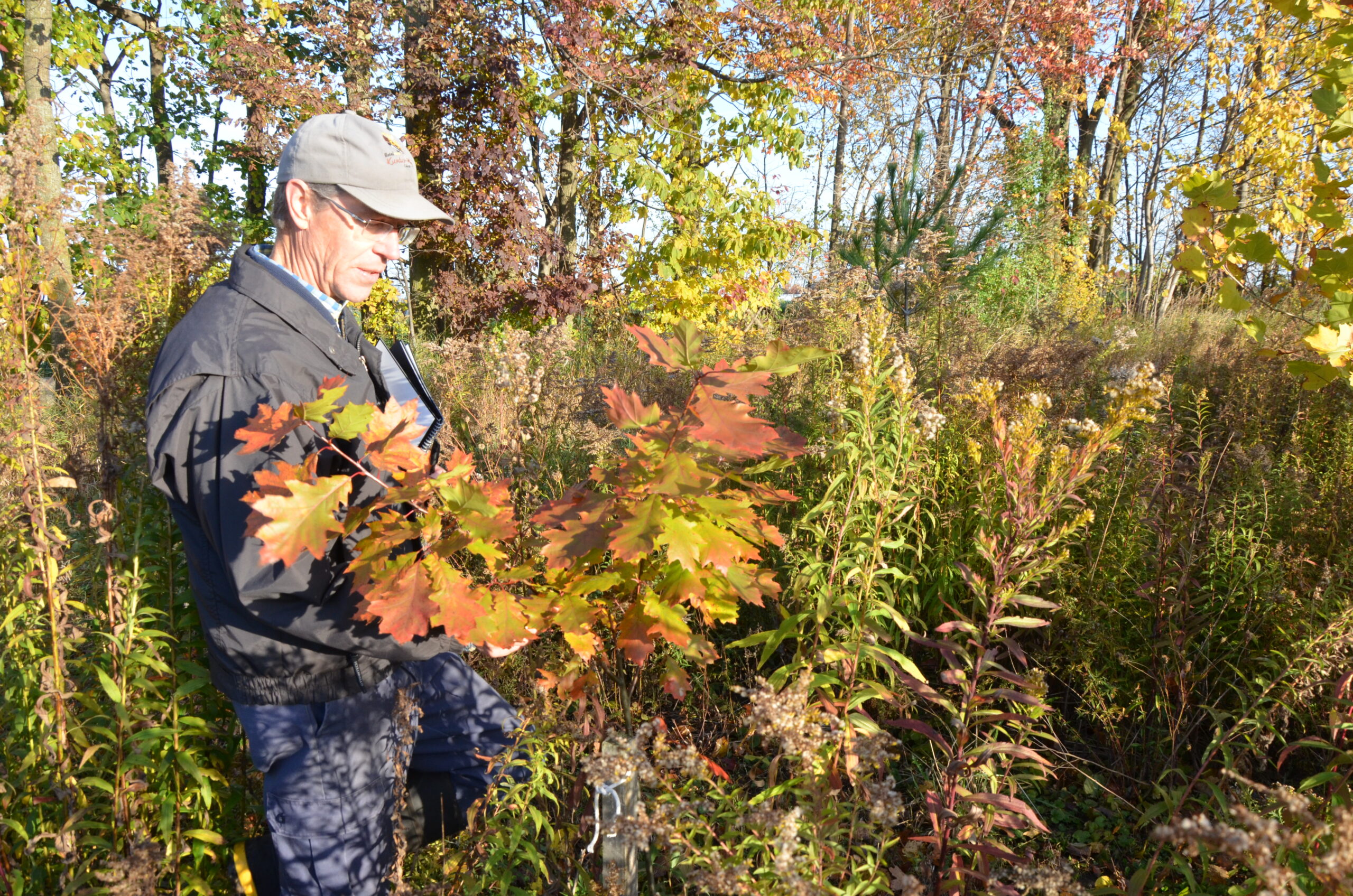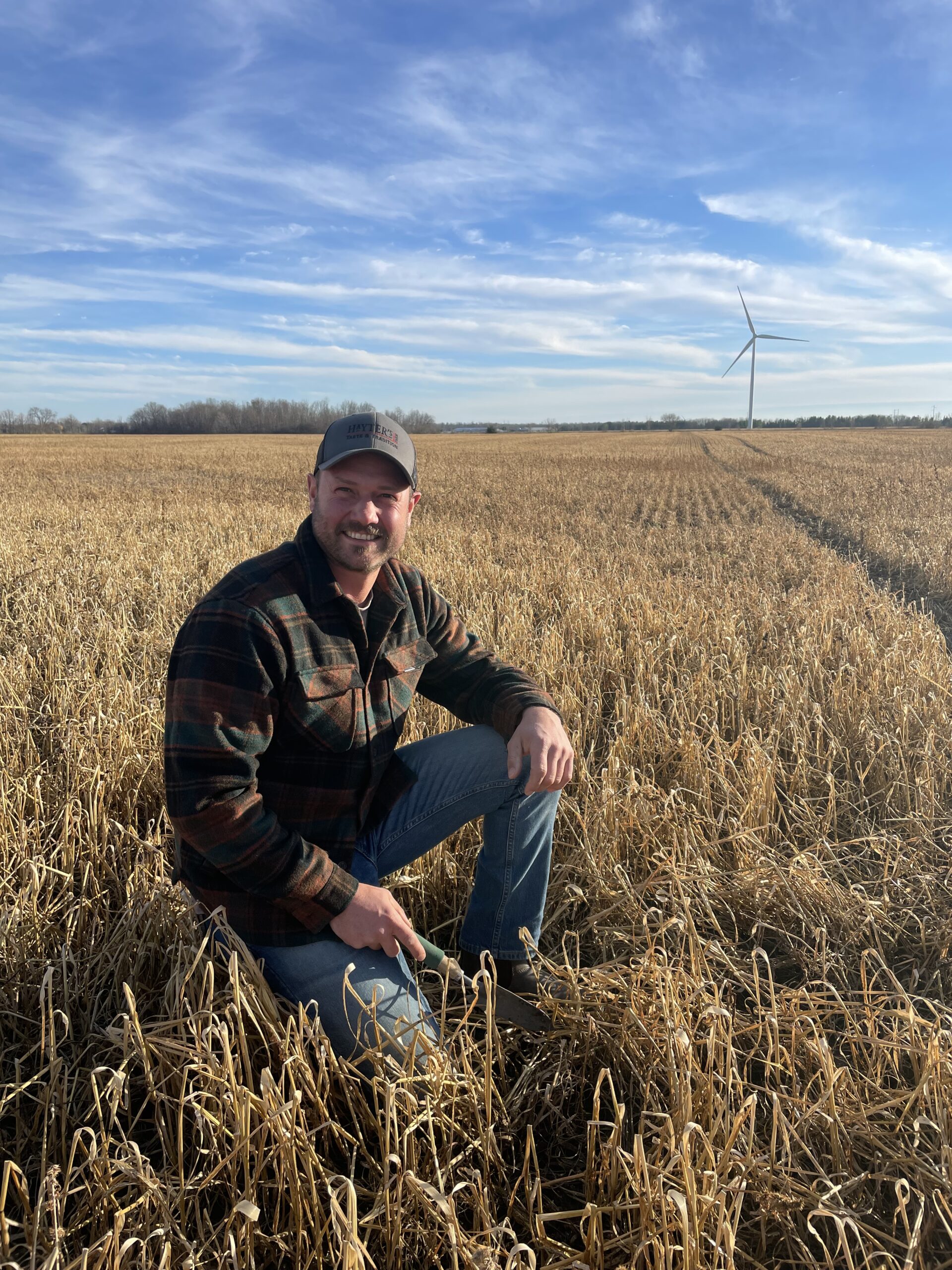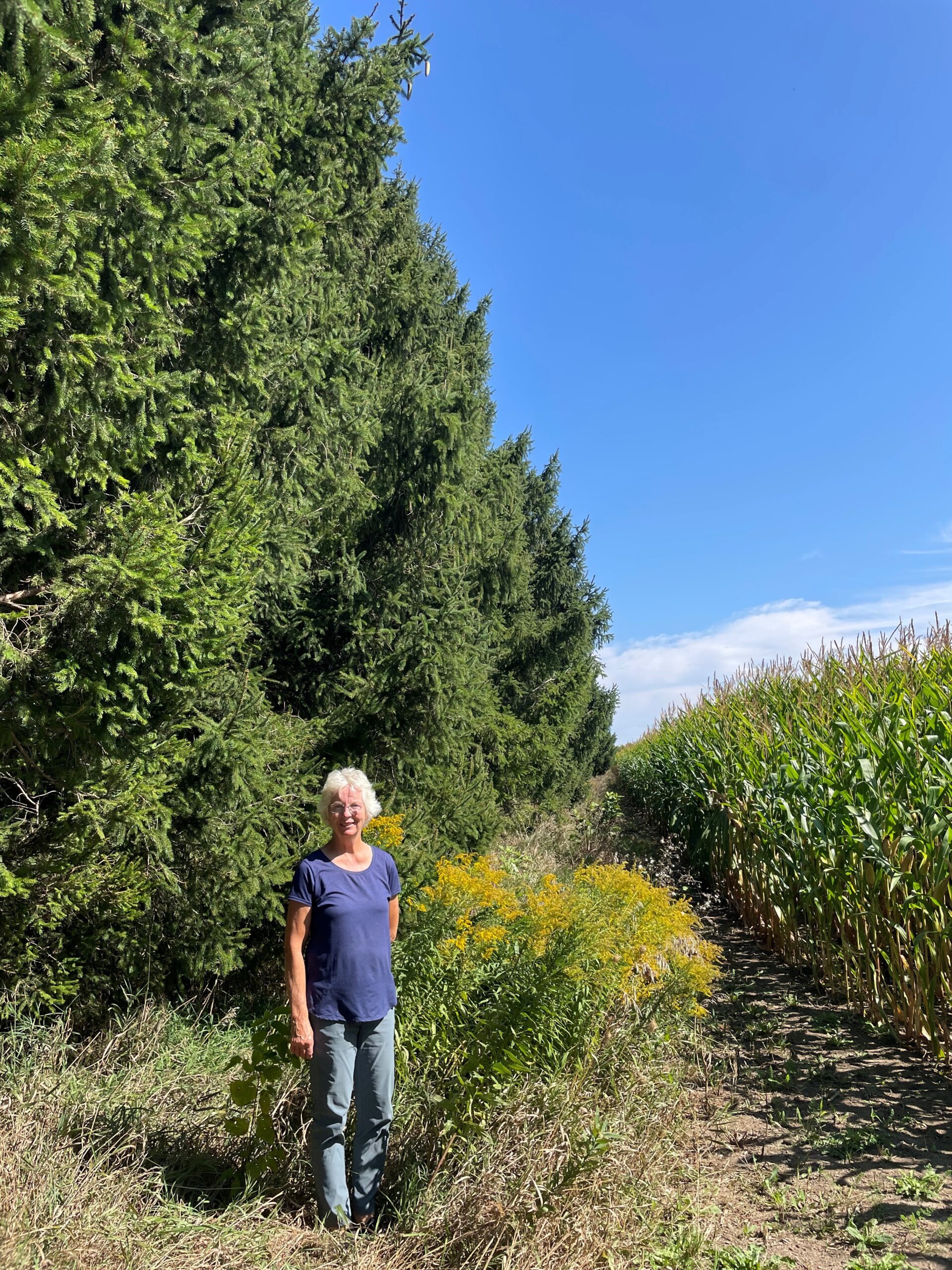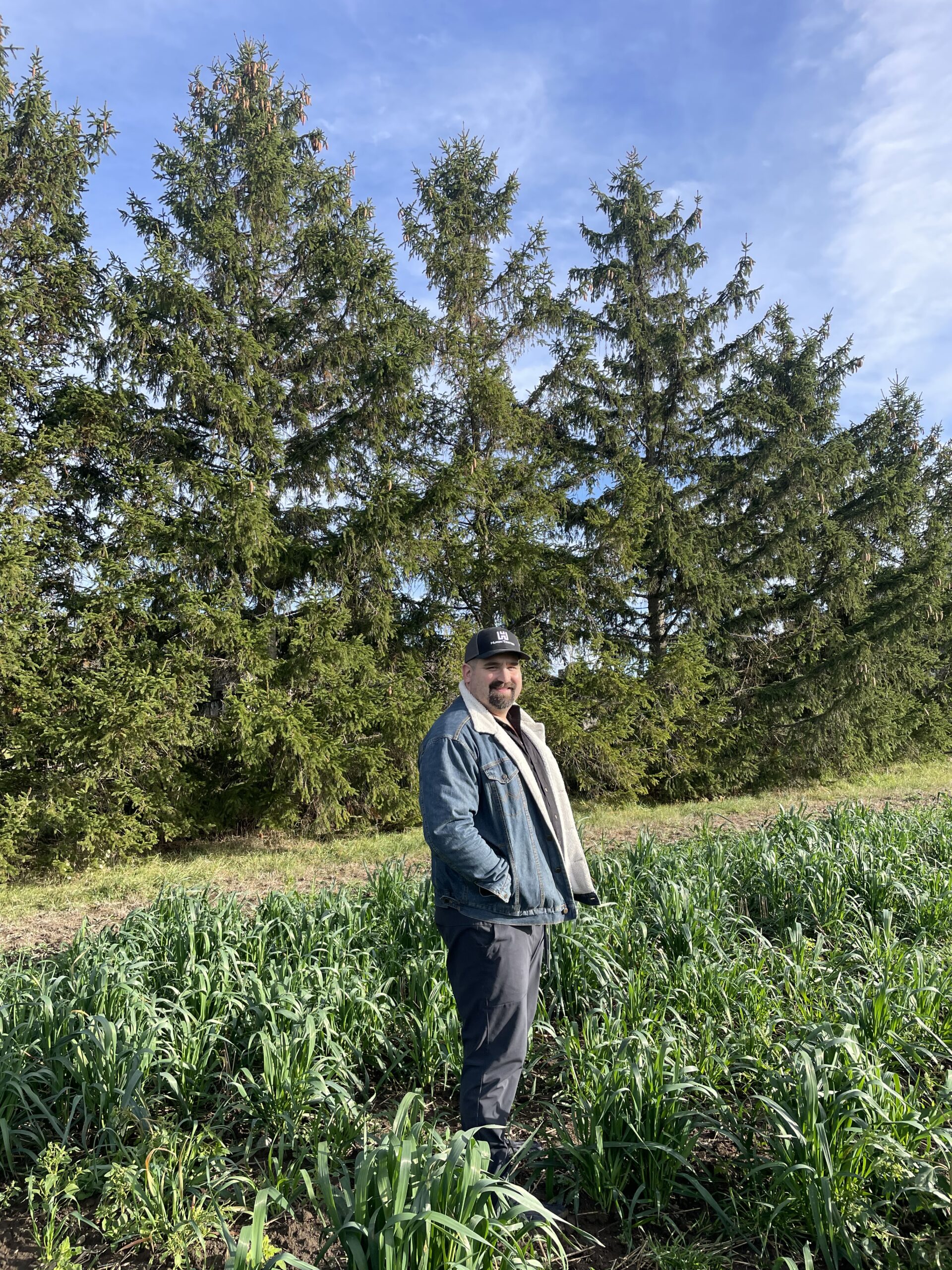HCWP Landowner Profiles

Andy Ross
Project Category: Tree Planting and Naturalization
In 2017, Andy and Nancy Ross decided to retire 14.5 acres of marginal farmland to plant it into trees. They envisioned connecting this area to the already forested areas of their property to increase forest cover, provide habitat, provide future forest products, and create an area of recreation for their family to enjoy.
The Ross family worked closely with the Conservation Authority to develop a plan that reflected their goals and objectives. Through the support of the Huron Clean Water Project (HCWP) and Forests Ontario, their vision came to life. Over the course of three years (2017 – 2019), a total of 8900 trees and 20 different tree and shrub species were planted to initiate the process of forest restoration. With the initial tree planting costs largely covered, Andy and Nancy used funds they had previously budgeted for the project to purchase tree tubes and stakes to protect the trees from hungry deer which are abundant on the property.
Andy and Nancy ensure their trees are well taken care of. You can often find them walking through their property with their two dogs, Jasper and Pepper, tending to the trees and documenting the wildlife they find. They continue to enhance their project over the years, adding bird perches and downed logs between the trees as wildlife habitat. They have enjoyed the many different species that have inhabited the area, including deer, foxes, turtles, rabbits, an abundance of bird species, and much more.
Andy and Nancy have explained this project as being a legacy for future generations who will have the opportunity to enjoy these trees just as much as they do, along with a little more shade.
Adam Hayter
Project Category: Cover Crop Incentive
Adam Hayter and his family own and operate a turkey and cash crop farm in Dashwood, Ontario. They grow turkey livestock and a 3-year rotation of corn, soybeans, and wheat. Adam and his family run their operation with an emphasis on soil health and being good stewards of the land, knowing that healthy crops and livestock begin on the landscape.
The Hayter’s implement many Best Management Practices into their operation; specifically, we would like to highlight their cover crops. Adam decided to implement cover crops into his operation about a decade ago as they provide many benefits to the soil and as a result, to the crops. Some of the many benefits Adam has seen since implementing cover crops include controlling soil erosion by providing ground cover, using roots to reduce compaction, increased water infiltration, weed control, and increasing organic matter. Adam mentions, ‘A bonus to planting cover crops has been the positive feedback received from the community on the flowering fields of cover that they often see throughout our multi-species cover cropped fields’ – Adam Hayter.
Alongside their cover crops, the Hayter’s implement many other best management practices into their operation. They have incorporated grassed waterways through low lying valleys that are prone to water erosion. They have also implemented 10’ wide grassed watercourse buffers to reduce erosion and filter runoff before it reaches the watercourse. These projects are just a few of the best management practices the Hayter’s utilize on their farm.
Projects such as these are beneficial in protecting soil and water quality. Programs such as the Huron Clean Water Project have provided support to the Hayter’s in implementing these conservation projects onto the landscape. The Hayter’s continue to find innovative ways to improve their practices to meet the goals of their farm and the needs of the environment.


Jack and Marg Kroes
Project Category: Tree Planting and Naturalization
Jack and Marg Kroes began farming together in the 1980s outside of Clinton, ON. They continue to farm swine and forage crops for their livestock. When Jack and Marg first began their farming journey, it was during a time of high interest rates; they had to do what they could to keep costs to a minimum. Jack and Marg utilized no-till cropping practices to minimize machinery costs and improve soil health by keeping the soil covered and stabilizing soil structure and temperature. Marg stated, “We needed healthy crops to provide food for our livestock, which in turn produced healthy food for our soils and crops” – Marg Kroes.
The Kroes decided to plant a single row of Norway Spruce around the perimeter of their farm to act as a windbreak. They still maintained 30% airflow and light through their windbreak to ensure good crop productivity while still protecting against wind erosion. Their treed windbreak, now over 40 feet tall, provides healthy biodiversity and a fortress to protect their soils and crops. In 2002, Jack and Marg also decided to implement a couple narrow based berm structures, also known as Water and Sediment Control Basins (WASCoB), in their cropped field to mitigate erosion. WASCoB’s help slow the flow of runoff and allows it to infiltrate slowly into the soil. This helps to reduce soil erosion and keep sediment and nutrients on the land, out of the nearest waterways.
It is important to Jack and Marg that they utilize and increase their natural beneficials to grow healthy crops and livestock. This includes the sun, water and soil. To utilize the sun’s heat and light, increase the soil’s water-holding capacity and availability, increase soil organic matter, and the interconnected biodiversity and complexity of the soil’s microbiome. This has provided the Kroes with more profit and fewer costs by working with the natural environment to increase the health of their soil and in turn, the health of their crops and livestock. With the support of cost-share funding programs such as the Huron Clean Water Project, Jack and Marg were provided with the assistance needed to implement their conservation projects. Jack and Marg state, “We are enjoying the benefits, still farming, and looking where next to improve. We are so blessed” – Jack and Marg Kroes.
Phil Van Raay
Project Category: Tree Planting and Naturalization & Cover Crop Incentive
Phil Van Raay, his brother Dean Van Raay, and parents Martin and Teresa Van Raay are currently running their third-generation pig and cash crop farm outside of Dashwood, Ontario. The Van Raay’s plant corn, beans, wheat, and for the last 10 years garlic. They have recently built a new wean to finish pig barn, and they produce approximately 22,000 hogs a year. The Van Raay’s take pride in their farm operation and put an emphasis on soil health to grow healthy crops and livestock. Some of the Best Management Practices (BMPs) the Van Raay’s implement on their farm are cover crops, treed windbreaks between cropped fields and around barns, a treed watercourse buffer, and strip tillage.
Their treed windbreaks help to reduce wind erosion and prevent airborne pathogens from entering their barns, ensuring crop and livestock health. They have also incorporated a treed watercourse buffer along the creek that runs through their cropped field to help filter runoff, reduce erosion, and protect water quality. The cover crops and strip tillage help to protect the soil by keeping it covered, reducing surface erosion, and mitigating compaction throughout the field.
Alongside the support of programs such as the Huron Clean Water Project (HCWP), implementing these BMPs have assisted the Van Raay’s in achieving their goals for creating sustainable farming practices and being good stewards of the land. In doing so, they are creating a legacy for many more generations to come.

